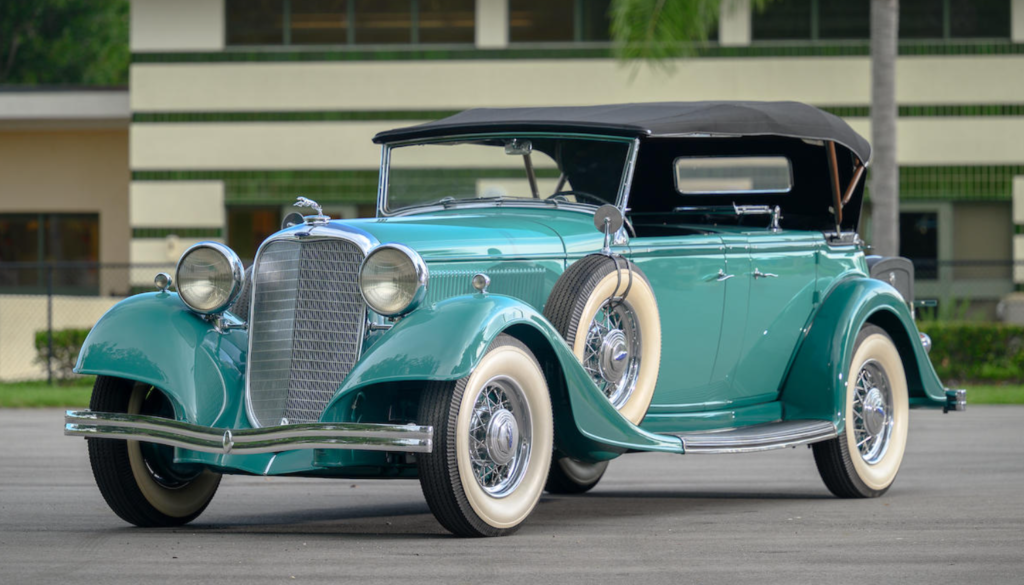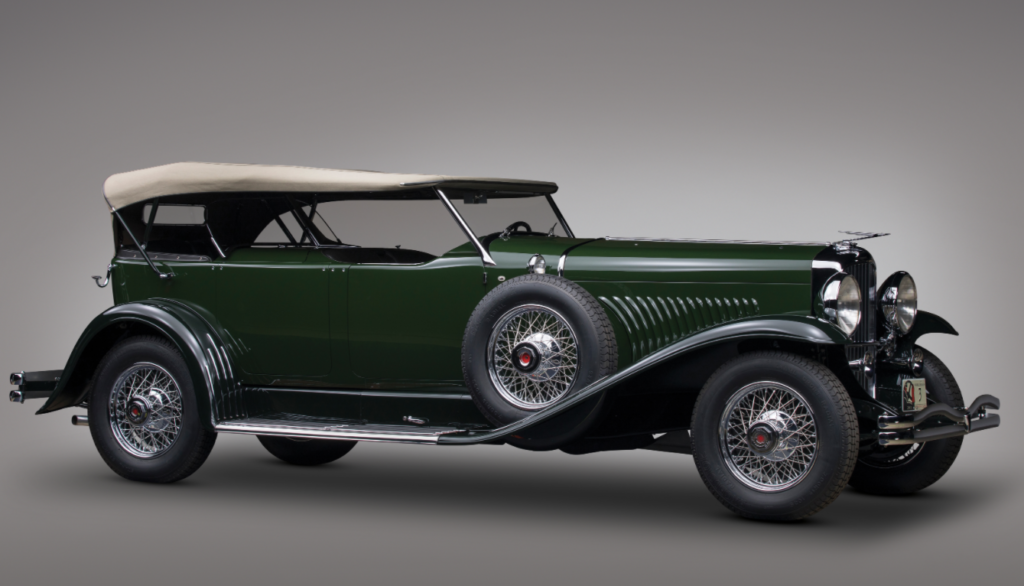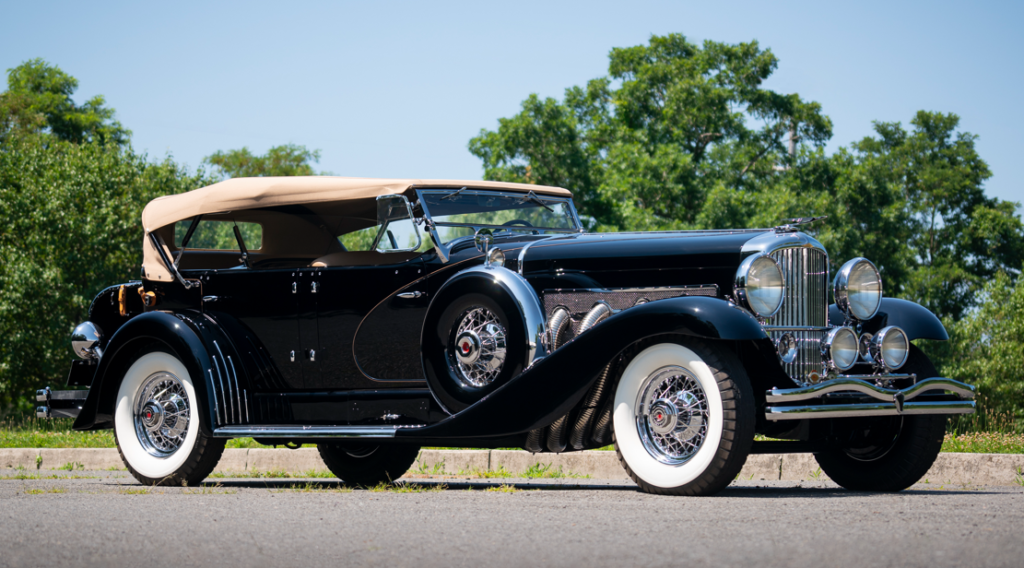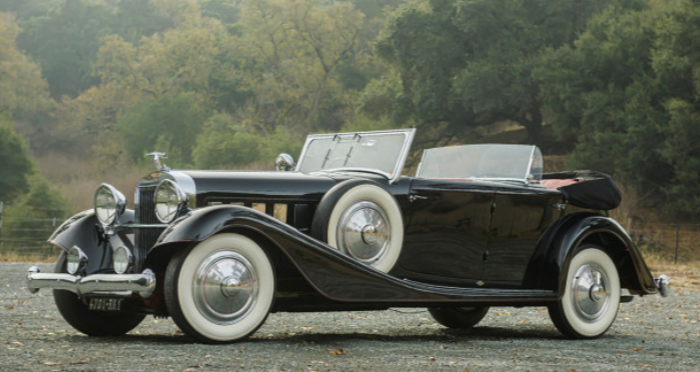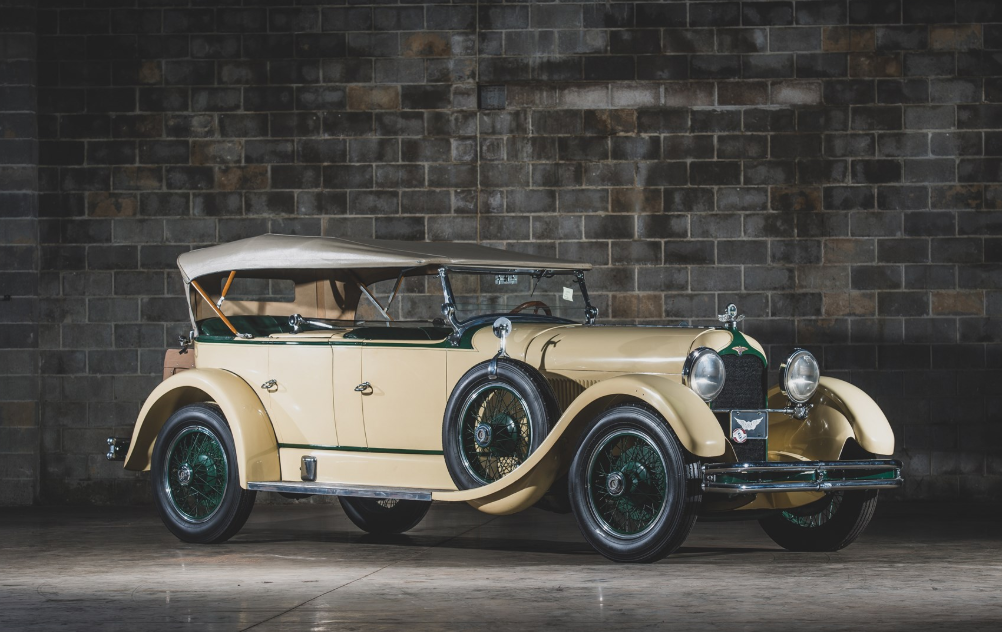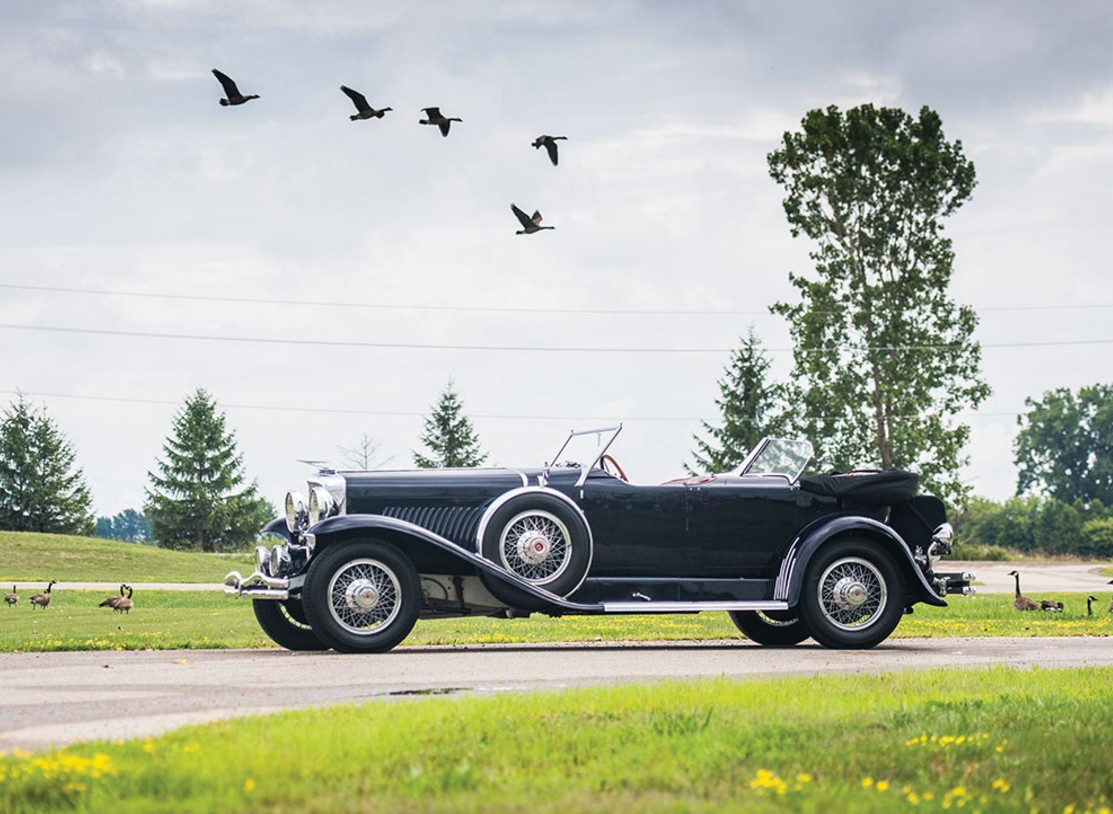1929 Duesenberg Model J Dual-Cowl Phaeton by LeBaron
Offered by RM Sotheby’s | Miami, Florida | March 2, 2024
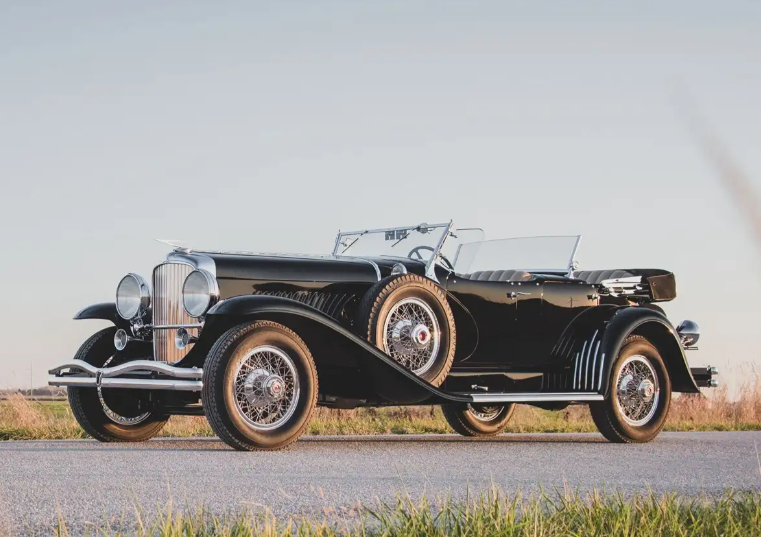
There are not many cars better than a sweep-panel dual-cowl phaeton. This one carries a relatively low engine number and was delivered new to Philip K. Wrigley, he of gum fame. It was originally delivered with Murphy convertible coupe coachwork, to which Mr. Wrigley added over 10,000 miles before deciding he wanted a dual-cowl phaeton.
But not just any such phaeton, he wanted the specific body on a family friend’s Duesenberg. But he didn’t want their car. So a body swap was arranged. Oh to be rich during the Great Depression. This chassis retains its original 265-horsepower, 6.9-liter inline-eight.
The Wrigleys sold it back to Duesenberg in 1936. The current restoration was completed in 2004, and it’s finished in all black, which is an interesting choice (but apparently the original look). It has an estimate of $2,650,000-$2,850,000. More info can be found here.


